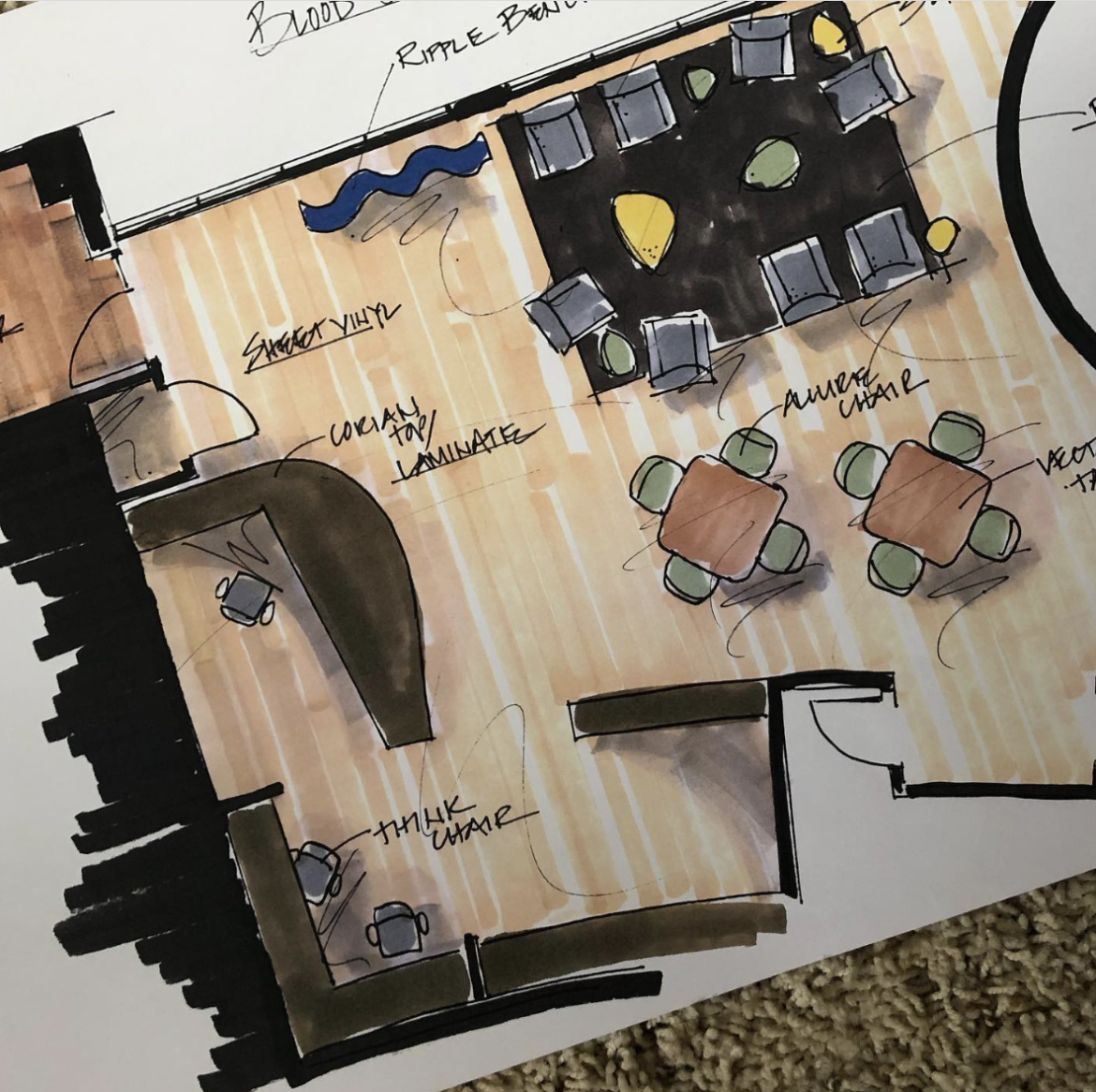
When I sit back and think about it, my entire career has been rooted in creation. I spent the first seven years of my career as an interior designer for commercial interiors, specifically working for furniture dealerships in the Milwaukee area. I was able to create functional and beautiful work environments for clients of all shapes and sizes using brands like Steelcase, Herman Miller, and Haworth (plus hundreds more). Much of my time was spent presenting my ideas to various clients and then revising them based on their feedback. I learned early on that it was my job to bring their vision to life vs. push my own style onto them.
The same can be said for creating content.
I took on marketing and communications initiatives early on in my career, writing case studies and internal newsletters for my employer, while maintaining my position as an interior designer. I then pursued an English and Professional Writing Degree, which I earned in 2009. I was published in several design related publications from 2007-2010 and it soon became clear to me that my true passion was for creating content and telling stories that could help sell, market, and communicate the value of a product or service.
Since 2010, I have been creating content, in a variety of formats and using a plethora of mediums. And what I have learned is that creating content is very similar to creating an interior design. Here are the four steps to creating content and how they relate to the design process:
- Research, which includes interviewing product experts, customers, and other stakeholders, and then I use that feedback to create my first draft. This reminds me of the programming phase of design, where you interview occupants of the space, management, and even the architect designing the building. All these inputs are used to create the initial floor plan and interior finish selection.
- Iteration. The client (internal or external) reviews the draft and provides feedback. Did I capture the idea, accurately represent the message and/or features? This reminds me of how a client would provide feedback on a floor plan. Perhaps there weren’t enough workstations in the space, or the panels were too high. I would adjust the design based on their needs. This process could take several rounds before getting to a final layout.
- Polishing. So, now the draft is approved, and we format the document/video/blog/ etc. We pick imagery or design graphics to support the message we have crafted. This reminds me of the finish selection phase of the project after we know how many conference rooms and workstations we need, we must pick metals, woods, fabrics, and paints to go with the design.
- Publish. The white paper or case study is ready to go live and so we publish on the web. Perhaps we get hundreds of downloads and feel confident that our content is resonating. But maybe we only get a handful. Time to re-evaluate the content and see what changes might need to be made to make it more marketable. This reminds me of the installation phase of the design project. The installers are onsite and perhaps there is a column in the way of one of the workstations that we did not know about or account for. Back to the drawing board we go, to try and alter the layout to accommodate this new factor. We will change the design to make it work best in the space.
Not only does the design process apply to content creation, I also now have a niche industry. Need to work with someone who understands interior design, commercial office furniture, or construction? You’ve found the right gal. To see some of the content that I have created for this industry, visit my portfolio.
